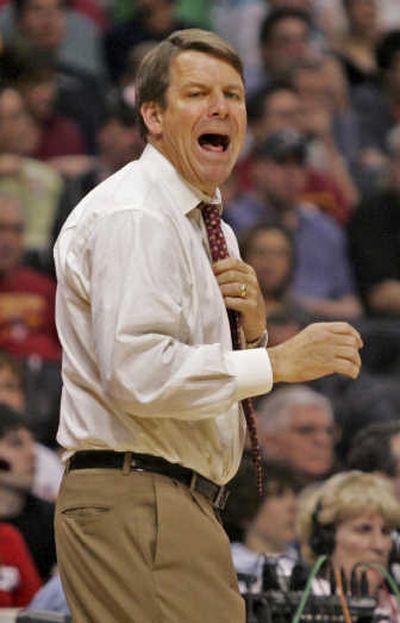Pac-10 at home on road

PULLMAN – What home-court advantage?
In the broken-glass-strewn highway that is the Pac-10 Conference basketball season, nothing is certain, not even the sharp edge that usually comes at home.
“Being home does not ensure you that you’re going to win in this league,” said Arizona interim head coach Kevin O’Neill on Tuesday addressing the reality that home teams are just 28-26 one week into the conference’s second half.
“That’s unheard of in any league, anywhere,” USC coach Tim Floyd said of the small margin between home and road teams.
But that’s what is happening this year in the Pac-10. Because of a depth of talent, much of the conference is hovering around .500.
Sixth-ranked UCLA and seventh-ranked Stanford, both 9-2 in Pac-10 play, have opened a three-game edge over the rest of the conference – the two are a combined 9-2 on the road – while Oregon State’s 0-11 mark probably ensures the Beavers a last-place finish.
But in between there are six teams either 6-5, 5-5 or 5-6, meaning the race for first-round byes in next month’s Pac-10 tournament should be intense. The seventh- through 10th-place teams play the first round of the conference tournament, while the top six earn a day off.
Nothing solidified the any-team-can-win-on-any-night crowd more than Washington’s 71-61 win over the Bruins last Sunday. The Huskies came in 3-7 in conference play after being routed at home by USC. UCLA was 9-1 and coming off a big win in Pullman.
“You see some crazy things happen,” said O’Neill, whose Wildcats are 5-5, tied with ASU, “or things you wouldn’t expect as much, but that’s due to the strength of the league, the great players and great coaches, anybody can beat anybody anywhere.”
Floyd, whose team is tied with Washington State for third at 6-5, was more surprised with how easy the Trojans won in Seattle, than by the upset of UCLA.
“In other leagues, look at the teams at the top and when they are playing teams on the bottom, you just chalk up a win,” he said. “That’s not the case in this league.”
None of the Pac-10 coaches, who each week extol the depth of their conference, is surprised by the inability of home teams to hold serve.
“I don’t have any good explanation,” said ASU coach Herb Sendek, who used to have to travel up and down upset-strewn Tobacco Road when he coached at North Carolina State. “It does surprise me. I would have guessed the home teams had won more.
“This conference has great balance from top to bottom. You can’t get over your next game. It’s just relentless.”
WSU coach Tony Bennett sees defense as a key element in keeping conference teams close on the road.
“When you go on the road, your defense has to be solid,” he said, “because that has to keep you in there, keep it competitive until, hopefully, you get it going offensively.”
Defense is also cited by O’Neill as one reason why Stanford and UCLA have separated themselves from the rest of the conference.
“Both are really good teams,” O’Neill said. “They both have guys that are stalwarts on the inside, they both play great defensively, have guys that are veterans.”
Oregon coach Ernie Kent also credits one other element.
“Just look at their personnel, it’s really good,” said Kent, whose Ducks are 5-6 (as is Cal) including a win over Stanford. “They are both big, physical teams. They both have been playing well, but they both at times have been lucky, too. They’ve won some close games. They’ve got some bounces and calls that have gone their way.”
Even Oregon State, WSU’s opponent in Corvallis on Thursday night, has had its chances. Last week, the Beavers led by nine at Cal and six at Stanford before reverting to form and losing.
“Our practices have become really intense,” OSU interim head coach Kevin Mouton said. “We’re doing a better job of making the right decision on the offensive side of the ball. We’re able to score, and at times earlier this year we weren’t able to do that.”
Because of the conference’s balance, losing streaks like WSU’s back-to-back-to-back home losses or Arizona State’s five consecutive losses, or USC’s three straight defeats to open the conference season, haven’t seemed to upset coaches too much.
“The ship wasn’t heading in the wrong direction even during the losing streak,” Sendek said. “In some areas we played better. But this league is awfully grueling, and awfully good, you just have to focus on the next game the best you can.”